85% of first time church visitors will not return for a second visit! Why does the contemporary church have such a difficult time keeping the visitors that come? Answering this fundamental question becomes pivotal for sustainable church growth.
We desperately want those who do not know Christ and do not have a church home to find Christ and find a home in our church. It’s what pastors pray for. It’s what many church members labor for. It is the Great Commission being played out in our church auditoriums. So how can churches retain a greater percentage of visitors?
We need to provide a path to follow. Visitors need a map for their journey to get connected and woven into the fabric of the church. The truth of the matter is that most churches are simply unprepared to meet visitors where they are and provide a step-by-step plan. Visitors can often attend a service, arriving late, and leaving early without ever connecting with a person or a plan for joining. And we miss our opportunity to keep them. How do we address the problem of visitor attrition head on? We address it with a journey map.
The Solution - Create a Journey Map for Visitors
A journey map visually captures the key, strategic steps you’d like to see the average visitor take as they seek to join your local church. The process for most people takes the form of 5 overarching steps as follows:
STEP #1
DISCOVERING
STEP #2
LEARNING
STEP #3
VISITING
STEP #4
JOINING
STEP #5
GROWING
In this article we are focusing on steps 3 (visiting) and 4 (joining) and providing small incremental steps that will help you to bring visitors closer and closer to connection.
Visitors may want to learn more about small groups, upcoming events, how to find fellowship, Bible studies, or ministry teams. They may be eager to join the church or get to know the leaders. Who should they contact? Where is the best place to get started? Help your guests connect with your church by providing crystal clear steps which will lead to meaningful relationships and ministry. You can do this with a Visitor Journey Map.
What should our journey map look like? How might it work? And what would we need to do to maximize the impact of this church growth strategy while allowing for interpersonal connections? At the end of this article, we provide a sample Visitor Journey Map so you can see a finished product. Before we get to that, let’s answer those questions below and address much, much more.
Create a custom visitor journey map for your church now!
Preparing for the Journey
Before the visitor ever experiences the journey map in action, the church must get ready for them. At this point, you’re not getting the visitor ready for the journey; you’re getting the church ready for the journey. Here are a few things you can do.
Train Your Members toward a Visitor Focus – Naturally, we want the members of our churches to be evangelistic. But that’s not specifically what’s in view here. We’re talking about a time when you have the church greet one another during the service. We’re talking about the 10 minutes before service and the first 15 minutes after the service. These are strategic times when we want our members to be 100% visitor focused.
Sundays are a golden time to connect with friends or fellow small group members. In those first 15 minutes after a service, however, you will either connect with the lost or lose them to the parking lot. It is a make-or-break time to connect with guests. Those strategic times can be the difference between a person becoming a future member of your church or being a one-and-done visitor.
Train your church to think this way. Partner with them to make connections with guests. Teach them to introduce themselves, to ask questions of your guests, to smile, and to share how glad the church is that they’ve come. At the end of the day, having a church that’s prepared to welcome and engage visitors is the foundation of sustainable church growth.
Design a Visitor Slide – Many churches project lyrics and quotes during service. If you’re one of those churches, design a visitor slide that is customized to correspond with a welcome announcement. It provides a visual that supports the announcement.
The slide takes simple steps from the journey map, acting like a checklist. This takes so little effort yet produces a disproportionate amount of fruit and impact.
Develop a Digital Welcome Card – Making a personal connection with a visitor is immeasurably important. That’s what the first two items are designed to accomplish. Beyond this personal connection, it is important to do all you can to capture some way to reconnect with your guests after they leave.
A digital connect card or an electronic welcome card is a great tool to develop. It allows an automated process for follow up to occur in the days and weeks ahead. And it captures the emails, putting them directly into your member management system (e.g. Planning Center Online). Naturally, you could try to capture this pen-to-paper and collect them in your offering baskets. That simply requires the additional step of a staff member or volunteer for data entry.
Once you develop this helpful tool, simply include it in your welcome announcement, inviting guests to pull out their phones. It takes only 20 seconds to fill out the card while you’re making your announcement.
Now, that you’ve done the preparation work, your church is one step closer to giving guests a clear path to connect. So, let’s pick up the journey map with your guests’ first visit on a Sunday morning.
Want to take a step toward reaching your community and inviting more guests to your church?
Learn more about our digital outreach service… Results are measurable and outreach growth is attainable. That is what every church wants. And that is what Digital Outreach provides.
Beginning the Journey (Their First Sunday)
They’ve come through your front doors and are now sitting in your meeting. What can you do to create a more meaningful and lasting connection? Here are a few items to include on your Visitor Journey Map.
1
Meet and Greet for the Whole Church – At some point during your Sunday service, provide time for the congregation to greet one another. For some, it may just be saying hello to friends they’ve already seen. For others, it will provide a chance to say hello to someone new, a face they’ve not seen before. In that 30 seconds of greeting, you can gain enough connection to reconnect once church is over.
2
Welcome Announcement with Slide – A pastor or a well-spoken church member can greet the church at the beginning of an announcement slot. This is the time to utilize the Visitor Slide you prepared. Be sure to thank guests for coming, highlighting the next three steps in the journey map. This is also where you utilize your Digital Connect / Welcome Card.
3
Guest Reception – Create a time following your service when guests can connect with a member of your church. Perhaps it is one of your pastors. Perhaps it is a friendly, evangelistic member or two. Light refreshments can help entice folks to stay for the extra 15 minutes. No matter what you decide to share in this meeting, have the journey map take center stage.
Naturally, you may choose simply to do one or two of these suggestions. Any move toward connecting with your guests will help increase the likelihood of a return visit.
Journeying with Them (Following their first visit)
The service is over and the church is closed. However, your opportunities for connecting with your visitors have just begun. Utilize a follow-up process that is helpful, automated, and non-obtrusive.
This is why we’ve been emphasizing the benefits of a digital welcome card throughout this article. It doesn’t just allow for automated data entry, leaving less room for error or worse. It also allows your church to benefit from triggering an automated welcome SMS text or email campaign via MailChimp or a similar email service.
Text Message – If your guest has provided you a phone number, a text message is a great way to make a personal connection. Have a pastor send a warm, personal message within a couple of hours after the service has ended.
Email #1 – This first email simply thanks them for visiting. Send this on Monday around 11:00am. Analytics say you’ll get the highest email open rate if you send around that time.
Email #2 – The second email is a very important one. It reaches guests mid-week with an invitation to the upcoming Sunday service. This prompts them to think of their upcoming weekend and make plans to attend service.
Email #3 – This last email in the follow-up process invites them to take next steps, drawing their attention once again to your Visitor Journey Map. Be sure to send this following the next Sunday service. Here, we answer the question, “What next steps should I take?” Rather than just providing the next steps, this email equips them to succeed by providing names and contact information for each step.
These messages are written and sharpened one time, but used for every visitor. It is a sure-fire and efficient way to make the all-important first connections with your visitors.
Reaching the Destination
Small Group or Bible Study – This destination moves your visitor toward community. There, they engage the dear saints that fill your seats and comprise your church.
Evangelism Class (Bridge, Alpha, Christianity Explored) – This destination moves your visitor toward discovering the gospel. There, they receive answers to their deeper questions and the good news of Jesus Christ while building meaningful spiritual relationships.
Membership Class – This destination moves your visitor toward membership. There, they learn about community and fellowship. They grow in the fear and knowledge of God. They become fellow workers in the task you’ve dedicated your life to.
Now It’s Your Turn
Are you ready to get going? Ready to take a step? Download the sample map we’ve provided. Develop your Digital Welcome Card. Plan a series of short announcements over a span of a few weeks to train your church to connect. Dedicate a sermon (or sermon series) to the ins and outs of reaching and connecting with the lost. And consider contacting Digital Outreach. Digital Outreach exists to help you reach the people you’re praying to reach. Check out our website, investigate what we can do for you, and reach out to us. You’ll find over time more and more visitors to your church are turned into family, which is what church growth is all about in the first place.







